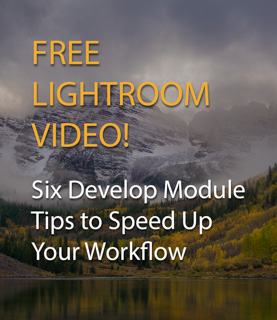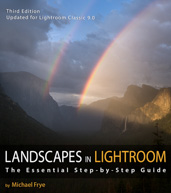In the Moment:
Michael Frye's Landscape Photography Blog
by Michael Frye | May 19, 2020 | Light and Weather
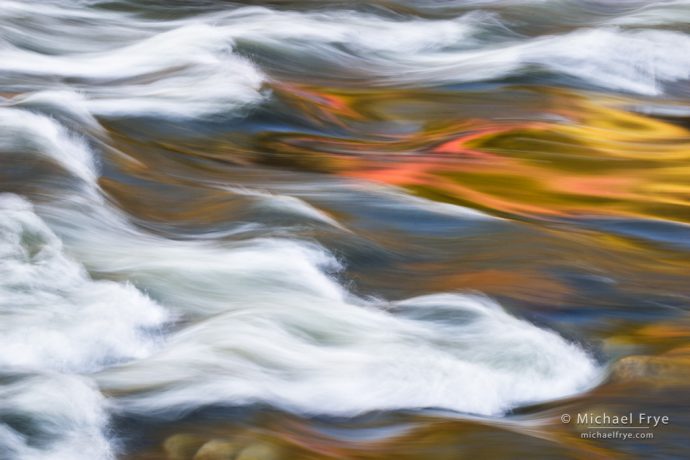
Redbud reflection in the Merced River, California
I made this photograph in March of 2004, with a 6-megapixel Canon 10D. That was my first digital camera, purchased only about nine months earlier, in the summer of 2003. The low resolution made this camera unsuitable for “serious” work, so for about two years I carried around both the Canon 10D and my Mamiya 645 film camera. I used the Canon for snapshots, and, when time allowed, to capture digital versions of my film images, so that I only had to scan the film captures when I really needed the extra resolution (like when making prints, or sending files to publishers).
I quickly learned to love digital capture. It was just so much easier: I could see the results right away, use the histogram to check the exposure, and magnify the image to see if everything was in focus. When photographing moving water I didn’t need to guess about the right shutter speed because I could try several, see the effects immediately, and dial in the shutter speed that best suited the situation. I found that the digital camera invited experimentation and creativity, because I didn’t have to pay for film and processing, and could see and refine the results of an experiment in the field. And, as if all that wasn’t enough, the dynamic range far exceeded transparency film, so the resulting images looked less harsh and more luminous. Resolution aside, when I compared images from my Mamiya and my Canon, I almost always preferred the ones from the Canon.
(more…)
by Michael Frye | May 3, 2020 | Composition
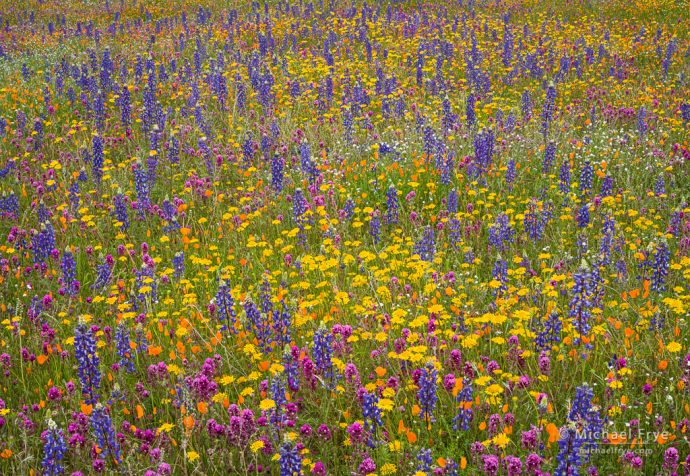
Spring colors, Mariposa County, California. 78mm; seven focus-stacked frames blended with Helicon Focus; each frame was 1/8 sec. at f/16, ISO 250.
I hope you’re all staying safe and not going too stir-crazy. I’m sure, like most of us, you’re anxious to be able to get out and photograph again. In the meantime, here are some thoughts about an often-overlooked aspect of composition that I hope will help you the next time you pick up your camera…
Balance doesn’t get talked about much, but it’s a vital aspect of composition. While looking for compositions I’m always thinking about balance – so much so that it’s become an unconscious act. I intuitively reject any composition that would feel unbalanced, and I’m often making subtle shifts in my camera position or framing to improve the balance of a photograph.
(more…)
by Michael Frye | Apr 20, 2020 | Advanced Techniques, Digital Photography Basics, Photography Tips
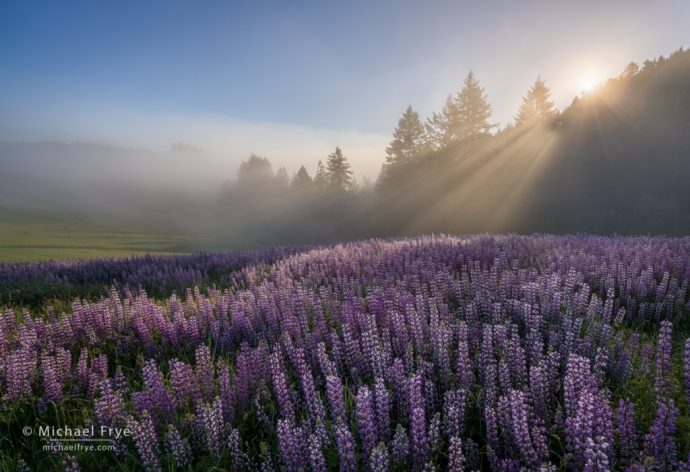
Sun rising over a field of lupines, Redwood NP, California. The focal length was 16mm, and the closest objects to the camera were the flowers at the very bottom of the frame, about two feet from the lens. I used my hyperfocal-distance shortcut to find the optimum focus distance, by doubling the distance from the closest object and focusing at four feet. Then I stopped to down to f/16 to get enough depth of field to make both the foreground and background sharp. 16mm, three bracketed exposures at f/16, ISO 100, blended with Lightroom’s HDR Merge.
In this recent post I talked about the importance of having a solid, well-practiced field routine, so that you don’t forget important steps, and you’ll be less likely to panic when the light gets interesting.
One of the steps in my routine, focusing, deserves a little more attention, so I’m going to cover that step in more detail here.
(more…)
by Michael Frye | Apr 12, 2020 | Advanced Techniques, Digital Photography Basics, Photography Tips
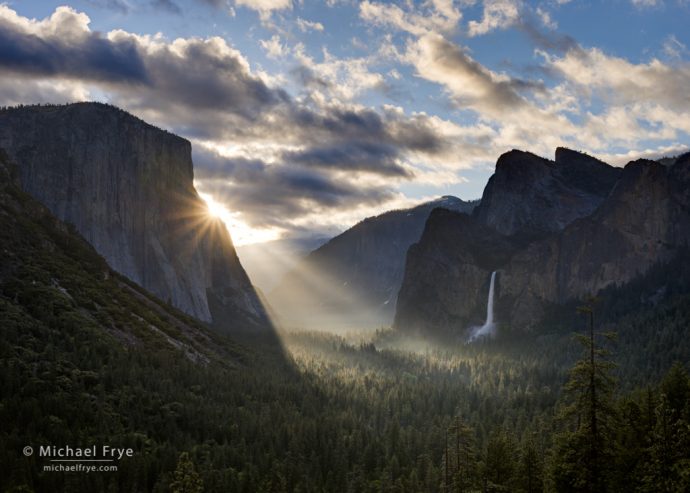
Sunbeams from Tunnel View, spring, Yosemite. Having a solid, well-practiced field routine helps me to calmly capture fleeting moments of light like this. 40mm, three auto-bracketed bracketed exposures at f/11, ISO 100.
Do you have a consistent field routine? Do you go through the same steps, in the same order, every time you take a photograph?
If you said no, you’re in good company. Most photographers I work with don’t have a solid, consistent field routine.
But I think having this routine is vital. Without one, you’re likely to forget important steps, like setting the right f-stop, or checking sharpness (and then kick yourself later when you realize your mistake). And when a rainbow suddenly appears over Yosemite Valley, or sunbeams break through the fog in a redwood forest, having a solid, consistent routine that you’ve practiced over and over will help you avoid panicking. You can just go through your normal routine and concentrate on putting one foot in front of the other, knowing that you won’t forget an important step.
(more…)
by Michael Frye | Apr 5, 2020 | Light and Weather
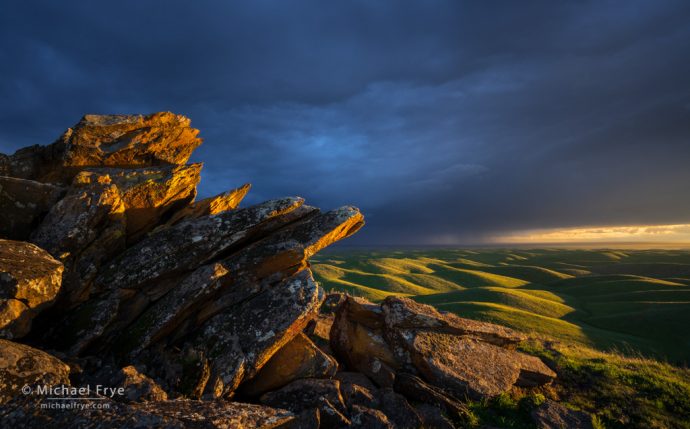
Late-afternoon light in the Sierra Nevada foothills. Most of the photographs I made this afternoon didn’t include a foreground. But I saw this rock outcrop, and kept it in mind for the right opportunity. That opportunity came when the sun slid underneath the clouds and highlighted the jagged forms of the outcrop. 16mm, 1/20th sec. at f/16, ISO 400.
Our winter got off to a wet start in late November and early December, but then fizzled. We hardly got any precipitation during most of December, January, and February – traditionally the wettest months of the year in California, when we get the bulk of our annual rainfall.
That pattern changed a bit in March, with a few good storms to help replenish the previously-anemic Sierra snowpack. And one of our largest storms since last spring is moving into California right now, with forecasters predicting three to four feet of snow above 7,000 feet. Our precipitation for the water year (October 1st through September 30th) will still be below average, but these early-spring storms should, at least, leave us with a decent snowpack for this time of year, with closer-to-normal runoff in our rivers and creeks over the next couple of months, and a more typical summer in the high country.
(more…)






